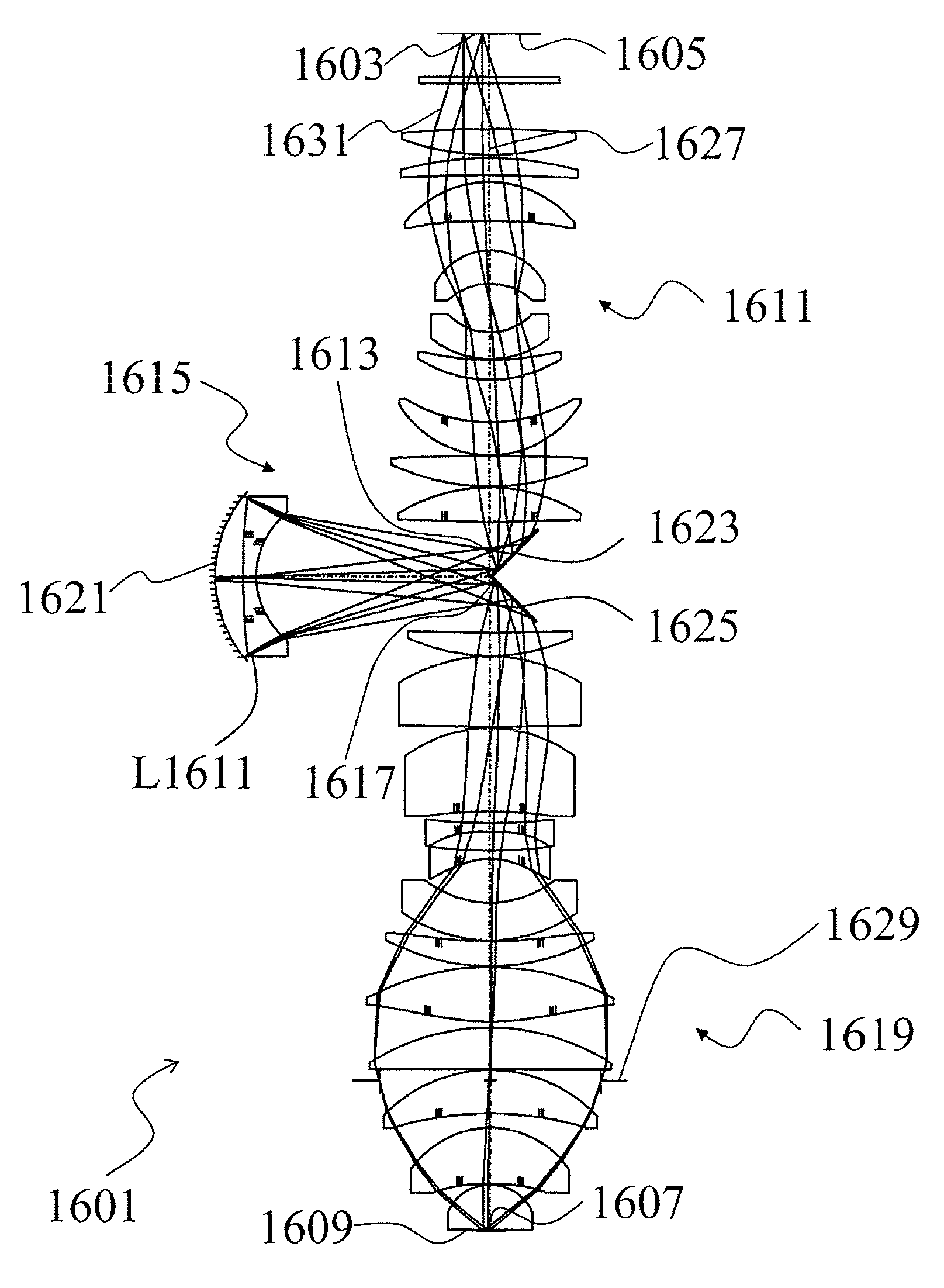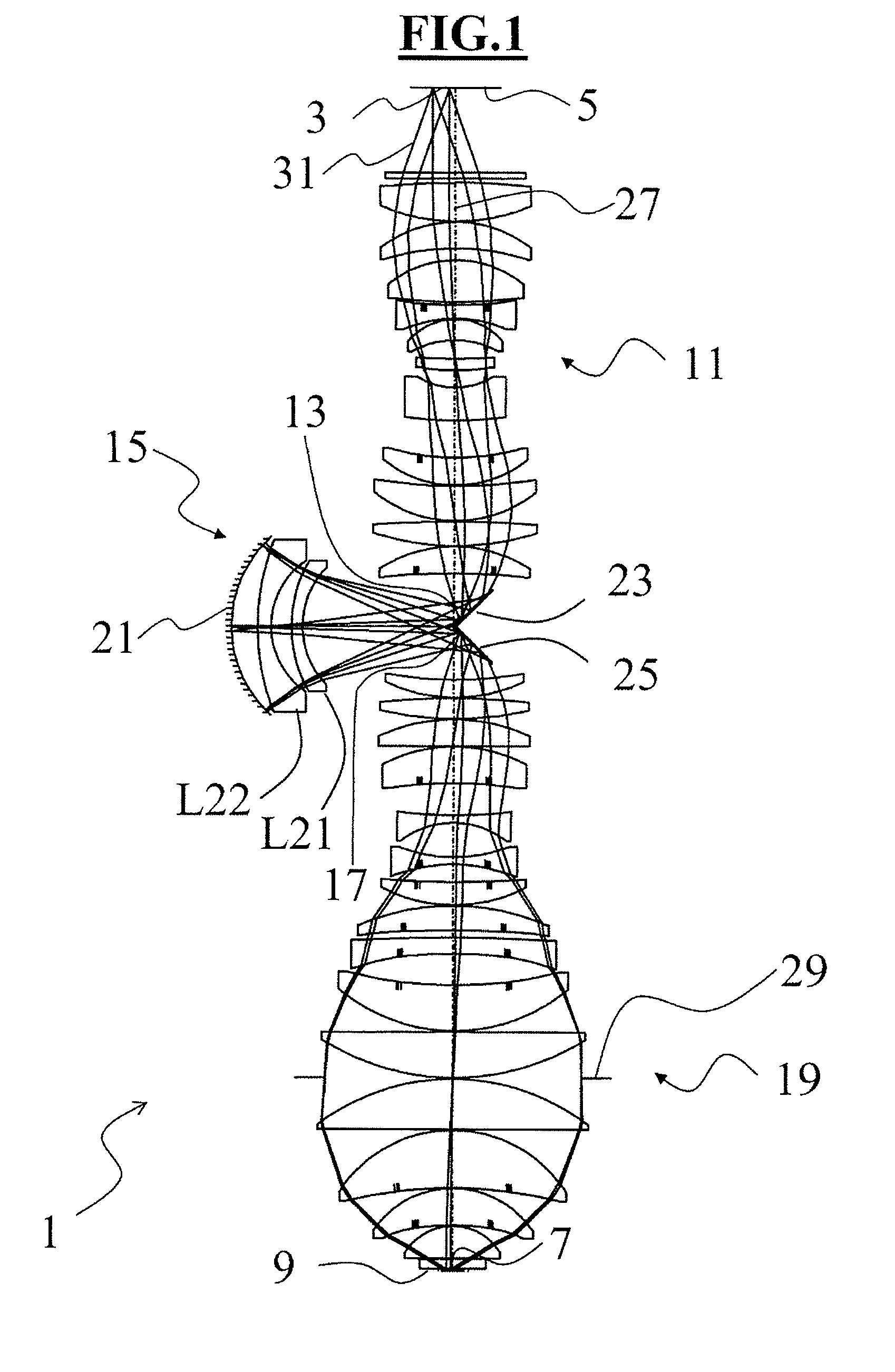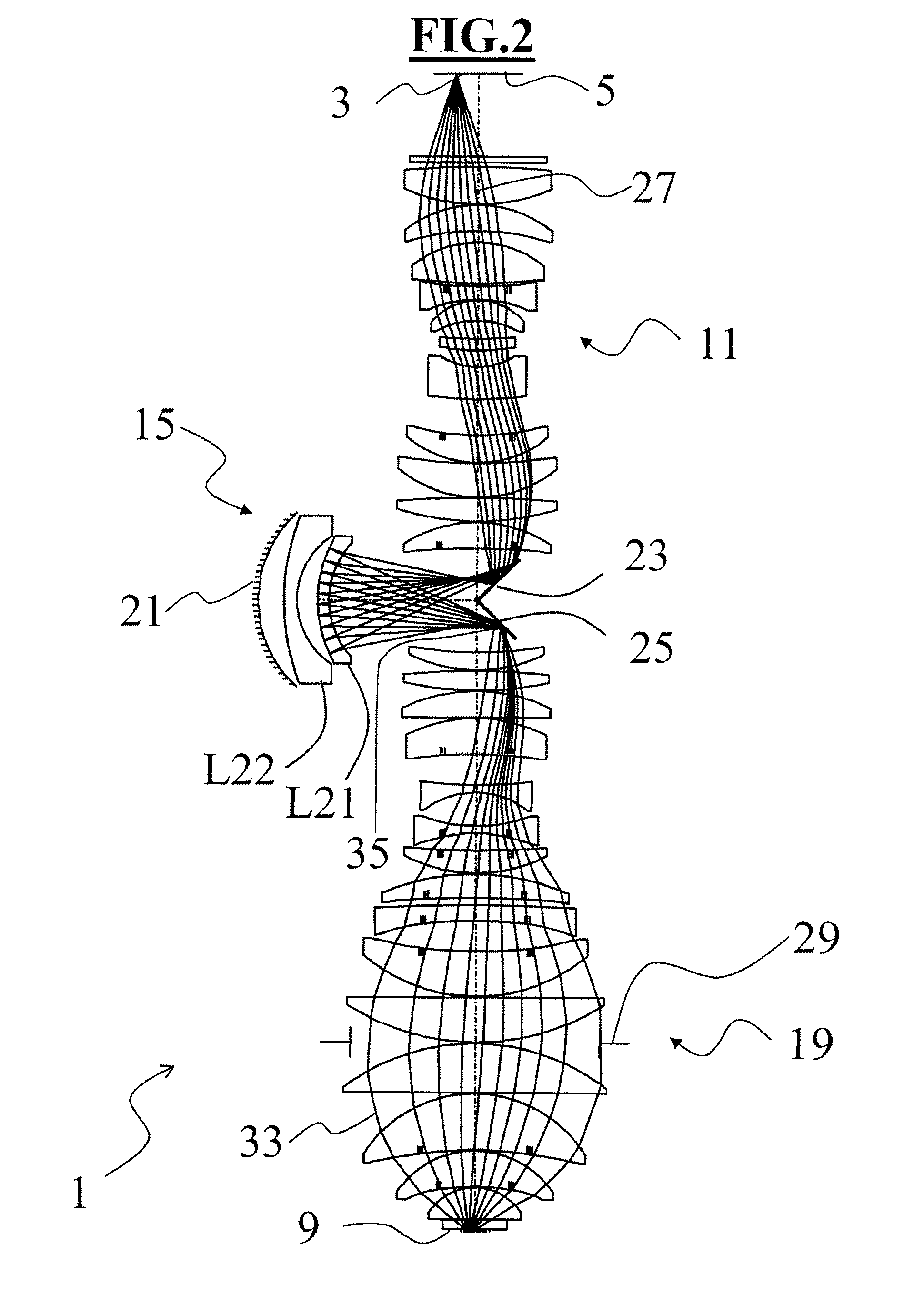Catadioptric projection objective
a technology of catadioptric projection and objective, which is applied in the direction of printing machines, instruments, lighting and heating apparatus, etc., can solve the problems of reducing comparatively high stray light intensity, and cannot be completely prevented, so as to reduce the contrast of the actual image
- Summary
- Abstract
- Description
- Claims
- Application Information
AI Technical Summary
Benefits of technology
Problems solved by technology
Method used
Image
Examples
Embodiment Construction
[0057]FIG. 1 shows the lens section of a catadioptric projection objective 1. The optical design of the projection objective 1 has been taken from the patent application US2009 / 0092925A1 in the name of Omura, published on 9 Apr. 2009, and corresponds to FIG. 4 therein. The optical data of the design are summarized in Table 1 in US2009 / 0092925A1. For a more detailed description of the optical design of the projection objective 1, therefore, reference is made to US2009 / 0092925A1, which is hereby incorporated into the present application by reference. The projection objective 1 images the object field 3 in the object plane 5 onto the image field 7 in the image plane 9. It includes a first partial objective 11, which images the object field 3 on to the first real intermediate image 13, the second partial objective 15, which images the first intermediate image 13 on to the second real intermediate image 17, and the third partial objective 19, which images the second intermediate image 17...
PUM
| Property | Measurement | Unit |
|---|---|---|
| angle-of-incidence | aaaaa | aaaaa |
| angle-of-incidence | aaaaa | aaaaa |
| reflectivity | aaaaa | aaaaa |
Abstract
Description
Claims
Application Information
 Login to View More
Login to View More - R&D
- Intellectual Property
- Life Sciences
- Materials
- Tech Scout
- Unparalleled Data Quality
- Higher Quality Content
- 60% Fewer Hallucinations
Browse by: Latest US Patents, China's latest patents, Technical Efficacy Thesaurus, Application Domain, Technology Topic, Popular Technical Reports.
© 2025 PatSnap. All rights reserved.Legal|Privacy policy|Modern Slavery Act Transparency Statement|Sitemap|About US| Contact US: help@patsnap.com



